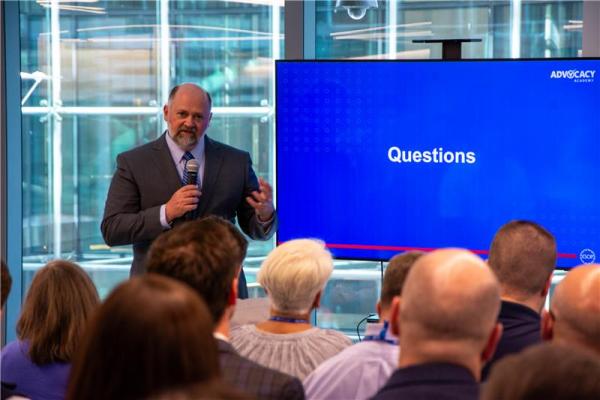Private Equity has awakened to what ESOPs have, and want to change the rules so they can get it. For the first time, The ESOP Association (TEA) is publishing an important special edition of The ESOP Report focused on a rapidly growing threat to the future of Employee Stock Ownership Plans as we know them: Private equity firms are seeking a new legal definition of an ESOP, a new structure of tax benefits only they can receive, and broad exemptions from five decades of employee protections embedded in the Employee Retirement Income Security Act of 1974 (ERISA).
Why are they doing this? If all you see is their public relations campaign, it is about a newfound appreciation for sharing their investment returns with employees. But sober analysis of their public assertions and privately shared plans surfaces tremendous problems for the future of existing, and not yet formed, ESOP companies.
A more reasonable explanation for private equity’s motivation into ESOPs is much more obvious and aligns with their singular mission of maximizing investor returns: big federal tax breaks, improving a lousy public image and addressing a crisis in retaining and motivating employees at the firms they acquire. Bluntly, it is about the tax breaks and improved productivity they hope to achieve that would, in turn, generate better returns for investors.
Over the last year, The ESOP Association studied their stated “principles”, their privately shared policy proposals, and the effect they could have on our member companies, the taxpayer, and our future. As we continue to prepare to defend what works well about existing ESOPs, the time has come to share this work with you, our membership of ESOP companies, ESOP plan beneficiaries, and professionals. Many very well-intentioned ESOP supporters are being called upon to support the private equity public relations campaign that is being advanced under the moniker “Expanding ESOPs”. A handful of high-profile professionals within the ESOP community have welcomed, supported, and even endorsed that new effort. And now, they are actively recruiting clients and peers to sign up as well, even with very thin explanations and few details as to what they may be signing up to support. After all, who doesn’t support expanding ESOPs?
Private equity firms are advancing this effort that is well-funded, professionally staffed, and will reach the point in the near future where it will confront every employee owner, every ESOP company, and every ESOP professional. TEA considers itself a steward of the good name and five decades worth of good policy that ESOPs have worked hard to build, the $1.7 trillion in wealth they have accumulated, and the nearly $165 billion in annual plan distributions they make to employee owners. Often The ESOP Association is a promoter, cheerleader, or marketer
for ESOPs – roles we relish. But now, it is our responsibility to take on the role of guardian, and not allow ourselves or our members to become inadvertently captured to another’s agenda, especially if that agenda threatens to significantly change, redefine, or risk the highly successful policy structure for existing ESOPs in consequential ways.
ESOP or Short Term Equity Plans (STEPs)?
The term “Broad Based Employee Ownership” is used as a catchphrase that captures the continuum along which many different forms of inclusive capitalism span. ESOPs have been the single most successful form of true employee ownership where individual employees hold a direct and irrevocable ownership interest in the equity (and its growth) of the business where they work. Other forms of employee ownership include cooperatives, and recently different types of Employee Ownership Trusts (some are calling them beneficial trusts).
The ideas advanced by Expanding ESOPs are not captured within any of these existing frameworks. They are something entirely new – they are intentionally short term and impermanent, they would be available only to institutional investors as a tool, they are not a retirement plan specifically, although it would appear the intention is to allow the proceeds from a payout to be placed into a tax preferred retirement fund. They are neither stock option plans, nor do they contain individual ownership accounts because their payout is a formula based upon compensation and tenure. The profits from the portion of the company “owned” by the account do not accrue to the account, they accrue to the investors. And any value eventually paid to the employee is derived entirely and directly from dollar-for-dollar tax breaks received by the investors. This is not a tool whereby the employees buy their ownership stake by accessing the future profits of the firm. The taxpayers are buying the employee stake by granting tax breaks to the investors.
All of these many reasons require a different name than an ESOP , because these proposed plans simply do not meet the definition of an ESOP any more than they meet the definition of a 401k. We believe the term “Short Term Equity Plan” or a STEP much more accurately captures the structure of these new ideas than an ESOP . Given the expected hold period of between 3 and 7 years for the vast majority of these types of arrangements, and the intent of generating an equity interest for employees through a direct tax reduction for the investor funds, and the limited percentage of the equity stake (minority, non-controlling), it seems far more appropriate than calling it an ESOP .









